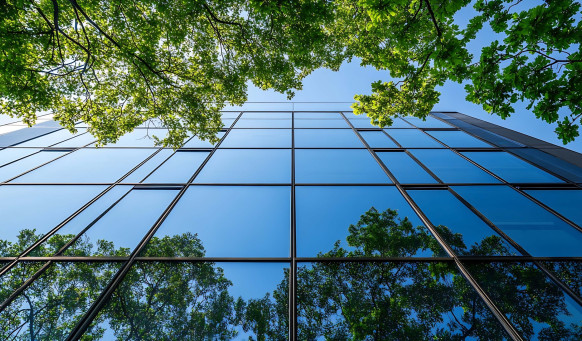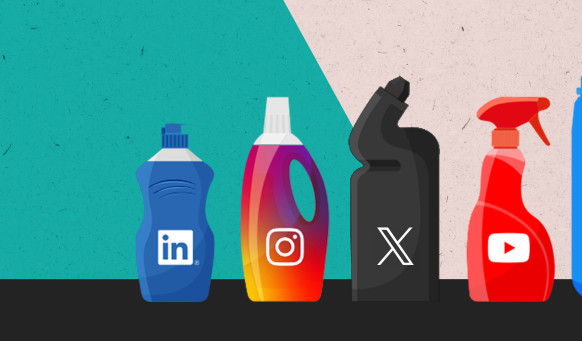Industry Viewpoint
Will Hotelification bring employees back to the office?
Over the past two years a high proportion of us have been working from home, but with employers’ keen to get their employees back to the office, they will need to be creative with refurbishments if they are to achieve this. And the ‘‘hotelification of the office’ may just be the answer!
Hotelification explained
If you haven’t heard of hotelification, it is the repositioning of the traditional office environment as a high-end workspace with hotel-like amenities.
The pandemic necessitated working remotely, which has changed the way we view work. By working from home, we have enjoyed flexible work schedules, we have used the time we spent commuting doing other things, we have saved money on travel, and if we’re honest, we have enjoyed wearing our tracksuits rather than suits! As a result, we are now reluctant to return to the pre-pandemic working world where it cost us time and money simply to get to the office.
Hotelification could change this. By changing the work environment to mirror the concept of a hotel – where you’re happy to pay to spend time being waited on and enjoying the relaxing environment away from your daily homelife – employees could be enticed back to the workplace. They wouldn’t begrudge paying their travel costs again if they could work in an environment that provided a level of hospitality and benefits they wouldn’t get at home. It’s about changing the mindset and repositioning employees to now think about their workplace like they would a hotel – somewhere they choose to spend time.
By providing luxury, engaging spaces, employees will hopefully learn to love the buzz of the office again - rather than the quiet homelife they’ve fast become accustomed to – and landlords will start to fill their empty office spaces.
So what are the key factors driving the hotelification of the office space?
1: Engagement and value
There has been a shift in perspective, with many employees realising they are more engaged and efficient when working remotely. The pandemic has encouraged employees to reassess their work-life balance, commuting expenses, and ultimately the value their job offers them. According to real estate investment specialist Jenny Sargeant, from a survey of 5,000 people, 47% said they will not return to their pre-pandemic working. This reflects the current cultural change, so any office environment will now have to compete with that.
Employees’ expectations have increased, and they expect their workspace to offer them more value. Much like modern universities providing a high-value hospitality experience to attract students, we can expect offices to offer a diverse range of amenities that workers can't get at home, such as cafés, gyms, wellbeing spaces, and multifunction areas.
2: The optimised workplace experience
With technology enabling the ‘deskless workforce’, we can expect workspaces to look less like traditional offices with desks, and more like collaborative hubs. Employers want to create a buzz in the office and foster positive social engagement and a creative approach towards office design could encourage this.
3: Wellness
With employees now preferring to work remotely and avoid any illnesses that are more easily transmissible through an office environment, employers will need to consider improving the health and safety conditions of the office, such as better ventilated environments.
Some Grade A office spaces may even look to include touchless, AI-enabled, voice-controlled systems which will help to prevent the spread of viruses, helping employees to feel comfortable at work.
What does hotelification mean for the office space market?
The forecast is optimistic for the office space market. It is currently in a recovery phase, and the London market is predicted to grow faster than the wider UK market overall. However, as the office moves away from a traditional model, so does the way employers rent.
With hybrid working now widely implemented, there is an increase in adoptions of the ‘hub and spoke’ model. This is typically where the office is found in a core location and functions mostly as the cultural hub of the business, while the spokes are a geographically distributed network of offices, based on the business’ needs. This results in a relaxed drop-in work schedule, which will reflect the new expectations of employees. It is predicted that many companies will adapt to this model, to attract and retain the best talent.
This divergence from the traditional office means that the flex office space market is poised for growth. Assets are changing from passive, low-risk, long-lease investments to intensively managed shorter-leased buildings. CBRE Investment Management predicts that 30% of all occupiers’ portfolios will consist of flex buildings. As a result, rental growth and improving facilities will become the focus of the market to attract and retain tenants.
We can expect to see a division in the office sector, as office spaces that are elevated to Grade A spaces with enhanced amenities, lead the market in terms of capital value and rental growth. Property owners who wish to increase the value of their office spaces will be investing in refurbishment and fit-out projects to ‘hotelify’ their offices for the future.
The Fabrick team has always loved working in an office and we continue to do so. We enjoy the odd day working from home but what we really love is the buzz that comes from being together in the office. It will be interesting to see if hotelification entices more people back to the office to enjoy the office culture that Fabrick definitely does.



